Michele Hall’s journey to becoming part of one of the world’s most pioneering underwater filmmaking duos was an unexpected one, inspired by love – of the ocean, of adventure, and of the man who became both her creative and life partner.

Natural history filmmaking is more than just a job. It defines your goals, characterises your ambitions, becomes your way of life. I’m often asked how I got into this business. It’s a career no one (especially me!) would have imagined, much less predicted, for my future.
I grew up a city girl, born to city folks. My idea of an outdoor adventure was a Sunday walk in a city park or sunbathing at a hotel swimming pool. As a child, we didn’t visit national parks and only once did I travel outside the continental US, on a short trip to the Bahamas.
Being a registered nurse was the only job I ever wanted. While in nursing school, I’d have laughed at the suggestion that I would have a second career 20 years later as an underwater filmmaker; I would have found the idea terrifying.
A few years after college graduation and a move from Kansas City, Missouri to San Diego, California, I began dating a doctor whose favourite pastime was scuba diving. That provided me with the motivation to take up the sport, a daring act to me at the time, and in May 1975 I became a certified diver.
A LIFE-LONG LOVE AFFAIR
I soon found myself literally immersed in the Pacific Ocean and enthralled with the new world I’d discovered in the sea. I’d fallen in love. First with the ocean and its inhabitants, and later with my instructor, Howard Hall. I’m sure my parents were horrified upon discovering my romantic attentions had drifted away from a doctor and future plastic surgeon, and toward a diving instructor! Eventually Howard became my wildlife guide.
この記事は Scuba Diver の Issue 01-2017 (107) 版に掲載されています。
7 日間の Magzter GOLD 無料トライアルを開始して、何千もの厳選されたプレミアム ストーリー、9,000 以上の雑誌や新聞にアクセスしてください。
すでに購読者です ? サインイン
この記事は Scuba Diver の Issue 01-2017 (107) 版に掲載されています。
7 日間の Magzter GOLD 無料トライアルを開始して、何千もの厳選されたプレミアム ストーリー、9,000 以上の雑誌や新聞にアクセスしてください。
すでに購読者です? サインイン
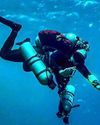
The Making Of A World Record-Breaking Diver
Descending more than 300 metres into the depths of the ocean may sound like a daunting prospect to even the most seasoned diver. But to one man, it was just another a challenge that he set for himself to see how far he was able to push the envelope.
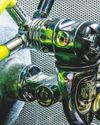
Risk Mitigation: Hose Failure
An unexpected outcome
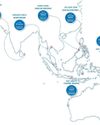
Top 10 Wrecks Of Asia-Pacific
We present a curated list of the top 10 most famous wrecks found in the Asia-Pacific region, listed in no particular order
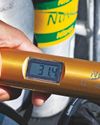
From The Medical Line: Diving After DCS
DAN medical information specaialists and researchers answer your dive medicine questions
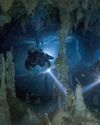
Cave Exploration: Beginning With The End In Mind
Building complex adventures on simple skills
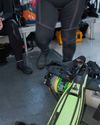
Dive Slate: Stay Safe On Board
When preparing for a dive, safety is at the top of the list – checking gear, learning potential site hazards and discussing procedures with your divemaster or buddy.
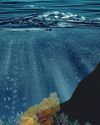
101 Tips On Becoming A Better Tek Diver
Technical diving takes divers beyond the typical recreational scuba diving limits, opening up many new and exciting possibilities.
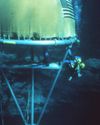
TECHNICAL DIVING TIMELINE (1660–1999)
It’s fair to say that the emergence of “technical diving” in the late 1980s, that is, the introduction of mixed gas technology, and later mixed gas rebreathers to the sport diving community, represented the culmination of hundreds of years of scientific discovery and technological development.

FLYING AFTER DIVING
From the Safety Stop

DIAGNOSING DECOMPRESSION ILLNESS
Incident Insight